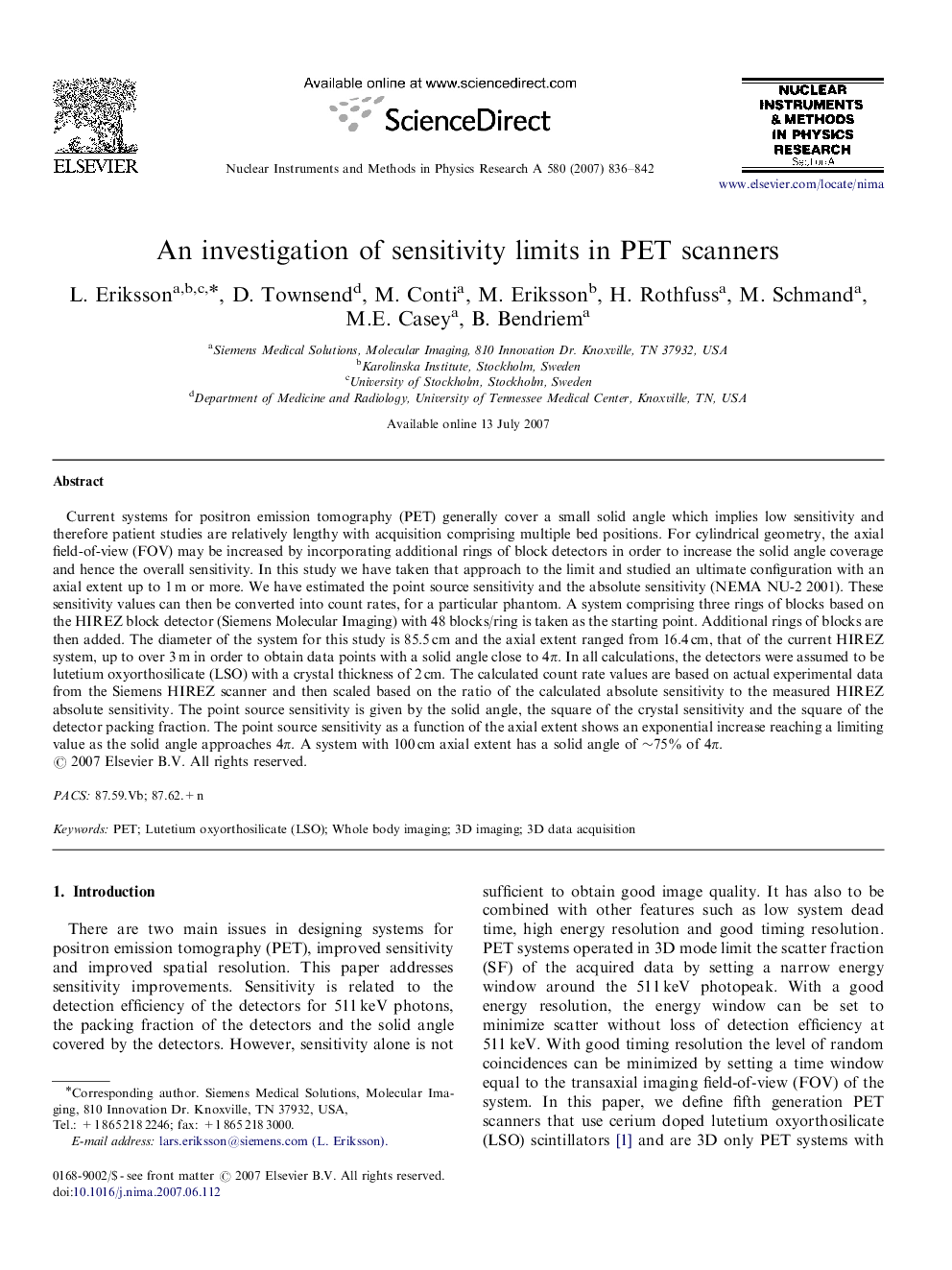| Article ID | Journal | Published Year | Pages | File Type |
|---|---|---|---|---|
| 1830096 | Nuclear Instruments and Methods in Physics Research Section A: Accelerators, Spectrometers, Detectors and Associated Equipment | 2007 | 7 Pages |
Current systems for positron emission tomography (PET) generally cover a small solid angle which implies low sensitivity and therefore patient studies are relatively lengthy with acquisition comprising multiple bed positions. For cylindrical geometry, the axial field-of-view (FOV) may be increased by incorporating additional rings of block detectors in order to increase the solid angle coverage and hence the overall sensitivity. In this study we have taken that approach to the limit and studied an ultimate configuration with an axial extent up to 1 m or more. We have estimated the point source sensitivity and the absolute sensitivity (NEMA NU-2 2001). These sensitivity values can then be converted into count rates, for a particular phantom. A system comprising three rings of blocks based on the HIREZ block detector (Siemens Molecular Imaging) with 48 blocks/ring is taken as the starting point. Additional rings of blocks are then added. The diameter of the system for this study is 85.5 cm and the axial extent ranged from 16.4 cm, that of the current HIREZ system, up to over 3 m in order to obtain data points with a solid angle close to 4π. In all calculations, the detectors were assumed to be lutetium oxyorthosilicate (LSO) with a crystal thickness of 2 cm. The calculated count rate values are based on actual experimental data from the Siemens HIREZ scanner and then scaled based on the ratio of the calculated absolute sensitivity to the measured HIREZ absolute sensitivity. The point source sensitivity is given by the solid angle, the square of the crystal sensitivity and the square of the detector packing fraction. The point source sensitivity as a function of the axial extent shows an exponential increase reaching a limiting value as the solid angle approaches 4π. A system with 100 cm axial extent has a solid angle of ∼75% of 4π.
